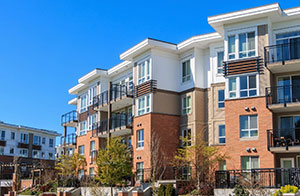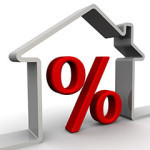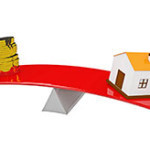 Over the last few years, Australia’s economic growth hasn’t been anything that’s worth talking about. Australian housing market, however, has made many investors very happy. A year to end-Quarter 3 2015 analysis reveals that house prices shot up by 11.4% across the eight chief capital cities of Australia. This ‘nominal’ rise can be seen as a 9.72% ‘real’ or inflation-adjusted rise.
Over the last few years, Australia’s economic growth hasn’t been anything that’s worth talking about. Australian housing market, however, has made many investors very happy. A year to end-Quarter 3 2015 analysis reveals that house prices shot up by 11.4% across the eight chief capital cities of Australia. This ‘nominal’ rise can be seen as a 9.72% ‘real’ or inflation-adjusted rise.
This year to year increase, says the Australian Bureau of Statistics, (ABS) is the highest recorded since the second quarter of 2010. All, however, may not be good with Sydney real estate in particular and the Australian housing market in general. Let us dissect the residential property market and also find out that one major threat which may especially push Sydney further down a number of steps.
Residential real estate prices in Sydney
For Sydney, residential prices rose by 19.9% in the third quarter of 2015 (Q-to-Q). Barring Melbourne which registered 9.9%, no capital city did anything worth writing home about. Perth and Darwin, in fact, registered negative growth. There is no doubting the fact that NSW has been the priciest sector of the Australian housing market for some time now.
Government’s plan to shift focus from mining to construction sector
 Sydney has recorded handsome (some use the word phenomenal) capital growth over the last few years. Sydney’s mean housing price was AU$780,900 in the third quarter of the year gone by. There has been some criticism regarding the way the Australian property market is overvalued. There is a section of experts who believe that the market has deviated from the “intrinsic fundamentals of economy”.
Sydney has recorded handsome (some use the word phenomenal) capital growth over the last few years. Sydney’s mean housing price was AU$780,900 in the third quarter of the year gone by. There has been some criticism regarding the way the Australian property market is overvalued. There is a section of experts who believe that the market has deviated from the “intrinsic fundamentals of economy”.
Others feel that the government initiative to shift focus from the mining sector to the construction sector was a correct move and cutting down cash rate for the purpose was also the right thing to do. This said, many pockets of market are bloating well beyond what they can hold and there are telltale signs of a property market bust.
Some relevant real estate information from premier sources
Before delving any further into our topic, let us soak in some information from premier sources. The Economist feels that the Australian property market is trading a minimum 30% above what it should be valued at. The International Monetary fund assumes that the risk profile of Australian real estate is in a state of stress and Sydney in particular may feel the squeeze, especially in light of how investor credit and interest-only loans work for the city.
The Global Real Estate Bubble Index is talking about high capital growth at the cost of declining rental yields. This can hurt those investors who look for positive cash flow. They will be forced to shift their strategy to negative gearing and because they will be pressed to do so in quick time, the balance of their portfolios might well be affected.
The economic contradiction
From a purely economic standpoint, a contradiction presents itself. The prices are on a rise and yet demand is on a high, too. The cumulative value of purchase for established dwellings shot above the AU$18 billion mark in October 2015 (these are seasonally adjusted figures), Now this is 23.7% higher than the value recorded same time last year. As for demand, there was 8.4% higher demand in October 2015 than in October 2014.
Data showing congruence between demand and prices
This data clearly illustrates that despite the rise in prices, demand has increased and not the other way around. What is true for established dwellings is just as true for the new dwellings. Their prices soared by 32.4% and demand shot up by 8.9% over the same period.
Paucity of housing supply
 The shortage in housing that we find today in various pockets of Australia- though there is oversupply in certain parts- can be put down to various reasons, including, but not limited to, declining household size (thus calling for more homes to fit in people), population growth, and net interstate migration.
The shortage in housing that we find today in various pockets of Australia- though there is oversupply in certain parts- can be put down to various reasons, including, but not limited to, declining household size (thus calling for more homes to fit in people), population growth, and net interstate migration.
An interesting observation- Relating housing market with GDP
There is an interesting observation to make here. The housing market has proven to be resilient despite the not-so-exemplary performance of the Australian economy. The growth has been 2.4% in the year gone by. The GDP grew by less than 3% in the 6 years preceding 2015, with the exception of 2012 when it was 3.6%. Be that as it may, there are a few explanations for how the Australian real estate has behaved in the recent past.
Cash rate is crazily low
The RBA cash rate has been at its lowest. A 2% cash rate was something homeowners would not have believed to be true in the pre-GFC era. Low cash rate has reduced mortgage liabilities for homeowners and also helped them in creating home equity faster. The investors have leveraged this feature to expand their portfolio.
Overseas investment on a high
 Sydney has become a global hotspot. Its real estate is being equated with New York, London and some of the choicest destinations around the planet. This has ensured greater attention from overseas buyers. Those looking for safe haven for themselves, good education for their children and a stress-free life are willing to buy properties in Australia. With the government expediting visa protocols for those investing more than $500,000 in the Australia housing market, there is a flurry of investors waiting to enter the Sydney property market.
Sydney has become a global hotspot. Its real estate is being equated with New York, London and some of the choicest destinations around the planet. This has ensured greater attention from overseas buyers. Those looking for safe haven for themselves, good education for their children and a stress-free life are willing to buy properties in Australia. With the government expediting visa protocols for those investing more than $500,000 in the Australia housing market, there is a flurry of investors waiting to enter the Sydney property market.
This is another reason why there is an upshot in demand despite the rise in prices. One particularly intriguing data is the doubling of overseas investment in Australia from AU$17 billion in 2012-13 to AU$34.7 billion in 2013-14. China has sought and gained maximum approvals. The United States is sitting in second place, right behind the Asian giant. On another note, it is worth adding that purchases can only be made by overseas nationals or expats once the FIRB gives a go ahead.
How Australia gave recession a miss
Because the Australian housing market was overvalued, a majority of experts (and even speculators) felt that the country would feel a severe pinch due to global recession. The way Australia avoided the recession blues is a tale worth narrating. One reason that readily comes to the mind is the lending standards in Australia. They have always been harsher than those in the US.
Fear of a ‘sub-prime’ like situation did not come to pass
The sub-prime mortgage fiasco witnessed in the US isn’t likely to happen in Australia because homes were not given out as a freebie without judging whether the mortgagee was good enough to pay for it. In addition, the government took the initiative of helping first home buyers (FHBs) by pulling in an AU$10.4 billion stimulus package in October 2008. This amount was 1% of GDP, which is rather commendable!
Government Grant to FHBs
 So the government projected its sincerity right at the outset. It did not want the bloodbath witnessed in the USA. The First Home Owner Grants were raised with the help of supplementary schemes like the First Home Owner Boost Scheme (FHOB) and the grant was available for both existing and new dwellings.
So the government projected its sincerity right at the outset. It did not want the bloodbath witnessed in the USA. The First Home Owner Grants were raised with the help of supplementary schemes like the First Home Owner Boost Scheme (FHOB) and the grant was available for both existing and new dwellings.
First home buyers are the most vulnerable segment to mortgage defaults. They have the least resources, after all, and thus they are in a position of minimal recourse. By offering them innovative grants, the government precluded the possibility of mortgage crisis.
Australia has come past the recession unhurt and over the last few years, it has really done well in terms of its real estate but this does not mean that there are not difficulties on the road ahead. For one, the rental yields are declining. For Sydney, the yields fell to 3.3% in September 2015. CoreLogic Data reveals that at the same time last year, the yield was at 3.8%. For Melbourne, over the same time, the yield dropped from 3.4% to 3%. With the median house price being the highest in Sydney, it is unfortunate that the rental yield is miserably low. It certainly is a disincentive for all those investors who are looking to positively gear their properties.
Australian housing market: two sides of the investor spectrum
There are investors who bank on capital growth and negatively gear their property in order to gain tax deductions (you can figure gearing in detail in some of my other articles written over the same platform). There is another school of investors that seek positive cash flow to avoid paying the mortgage out of their own pockets. When rental yields suffer, so does the chance of gearing their properties positively. I think that capital growth is a very handy concept, but in the long run, you also need the help of rental return, something which, at present, is not happening in either Sydney or Melbourne.
How is the mortgage market behaving?
 The mortgage market in Australia is rallying at 95% of the GDP (calculated last year). This is mammoth growth if you see that the figure was 15% of the GDP in the 70s and 58% in 2002. Many thanks to the climate of low interest rates; the government, amidst widespread speculation, has held the interest at extremely low percentages and even made two further 25 basis point cuts in the last year.
The mortgage market in Australia is rallying at 95% of the GDP (calculated last year). This is mammoth growth if you see that the figure was 15% of the GDP in the 70s and 58% in 2002. Many thanks to the climate of low interest rates; the government, amidst widespread speculation, has held the interest at extremely low percentages and even made two further 25 basis point cuts in the last year.
Where does the housing loan industry stand?
Housing loans, both in terms of volume and frequency, have increased and counted in the third quarter of 2015. This is true for investment-grade properties and owner-occupied properties, too. For the latter, housing loan volumes shot up by 10% from Q3 2014 and stood at AU$911.75 billion. For investors, the figure was AU$526.08 billion, a rise of 4%. It is amply clear, and can be read as more than just a sidenote, that the era of owner-occupiers has well and truly dawned.
How will the lending squeeze impact us?
Till now, the residential real estate market has been amply supported by the RBA rate cuts. Borrowing and spending have both seen an upward curve due to this one single factor. Recently, the lending criteria and norms have both squeezed a little and it may hit some of the investors who were banking on more generosity from lending institutions.
This said, the scene may not change soon enough, and any changes that may come into effect will give investors a decent gestation time to adjust. If the lending market has been asked to tighten its policies, it is only so that the world does not encounter another sub-prime mortgage like condition, especially one that comes out of Australia.
Overvalued market with high risk profile

In an apparently overvalued market with a high risk profile, the least that any government will want to do is stiffen lending norms. Speaking of lending, there are other factors which need to be pondered. The Aussie dollar dropped in value by 11% between the last month of 2014 and 2015.
Despite recovering export, the current account deficit is still present- with demands from key nations remaining uncertain. However, consumer price index shows recovery, a drop in the unemployment rate, and inflation in check. These are definitely three good reasons to be cheerful about.
The threat of high household and private sector debt
I need to devote a paragraph to the threat of housing debt (the threat I talked about in the opening paragraph). If a housing bubble is perceived to be present, it is largely based on the expanding household debt. In early 2015, private sector debt was a little more than double the GDP. Household debt is also 30%higher than the GDP.
The top banks of Australia are especially vulnerable to debt standards, and if the market crashes, the banks would have to run for cover in terms of liquidity. They may get cover, but at the cost of paralysing their own structure and bailing themselves through their own illiquid assets.
Mortgage in relation to outstanding credit
 In the 1980s, mortgage made up for nearly 1/4th of outstanding credit. This figure is a little above 60% now. The top banks need to inject more power into their capital holdings and this is the only way they can insure themselves against mortgage defaults on a future date. Many feel that the Sydney housing market, which has done exceedingly well over the last few years, has finally run its course. Of course, there are those who feel that it’s going to get its second wind, and there are others who feel that the market is resilient enough and always manages to beat the predictions of doomsayers.
In the 1980s, mortgage made up for nearly 1/4th of outstanding credit. This figure is a little above 60% now. The top banks need to inject more power into their capital holdings and this is the only way they can insure themselves against mortgage defaults on a future date. Many feel that the Sydney housing market, which has done exceedingly well over the last few years, has finally run its course. Of course, there are those who feel that it’s going to get its second wind, and there are others who feel that the market is resilient enough and always manages to beat the predictions of doomsayers.
Will Sydney beat the doomsayers once again?
However, if the theory that the Sydney property market has run its course is given merit, then we also have to look at overvaluation of stock, existing household debt, and the possibility of sudden increase in interest rates as factors which may make matter worse. If that happens, we must come face to face with what did not occur in 2008. Then again, this doomsayer’s chant is still far from what may happen.
For all we know, Sydney may hold out for one more year before it starts to deflate slowly and not burst at one time. This is what happens when we reach the end of the property cycle. At this moment, it can be said with some conviction that Sydney real estate has good control over the economic variables, and the next property boom, when it comes, will most likely be an even more robust one.











